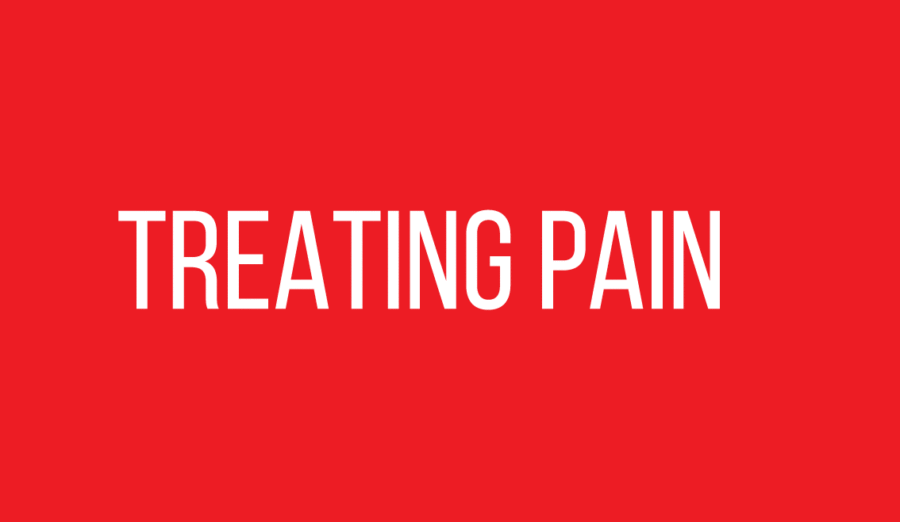Broken shin bones. Three torn ligaments. A broken leg. A lacerated spleen. A fall directly on the head. Sophomore Celia Germann has seen her fair share of injuries. Participating in gymnastics from the age of three, Germann eventually had to quit because of her injuries.
“I didn’t feel that I had (to quit), but my parents forced me to. They didn’t want to pay for more hospital bills,” Germann said.
As a result of these injuries, Germann developed chronic pain in the neck and lower back, as well as her knee.
“It doesn’t really go away,” Germann said. “At its worst, on a scale of one to 10, it was a seven or an eight.”

After Germann broke her leg, she was treated by doctors with opioids, or painkillers.
“I was in a cast for six weeks and a brace for another six. At the beginning, (doctors) gave me Oxycontin to deal with the pain, and then a bunch of Tylenol and Ibuprofen,” she said.
Germann’s is not a rare case. According to the Centers for Disease Control (CDC), chronic pain affects an estimated 100 million Americans, and the number of opioid prescriptions in the United States has increased from 76 million in 1991 to 219 million in 2011. A 2015 report by the National Institutes of Health (NIH) warns of an addiction epidemic to Americans from the prevalence of the use of opioids. The NIH report also reveals that chronic pain in the United States is not handled well overall, citing mismanagement in the use of painkillers. According to the CDC, 17,000 deaths occurred from opioid-related overdose in 2011.
While past addiction epidemics affected low-income, inner city citizens disproportionately, the outbreak of prescription painkiller abuse is affecting even affluent communities, according to the NIH.
In Germann’s case, however, her doctors were careful to avoid any dependency on painkillers.
“After about three weeks of taking the medication, (the doctors) wouldn’t let me refill my prescription because it was an opioid,” Germann said. “There was always the problem of getting addicted if you take them for too long.”
For some time afterward she stopped taking medication, however, Germann still experienced chronic pain in her neck and back. So, at the advice of her diving coach, she began to make regular visits to a chiropractor.
“The first time I went, it was like night and day,” Germann said. “I hadn’t really been seeking any kind of that treatment at all but then when I went they fixed up a whole bunch of things. Even in the first day I could feel a difference; it hurt so much less.”
Athletic trainer Maura Flynn said she has seen many of the CHS athletes she treats utilize alternative treatment such as  visiting chiropractors.
visiting chiropractors.
“I have lots of kids who go to chiropractors,” Flynn said. “I think (chiropractors) serve a purpose and they can definitely help them.”
Germann said she much prefers treating her pain with chiropractic care than painkillers.
“With pills, it’s unnatural to be putting all of those chemicals in your body, and it’s easy to get addicted, and there are all sorts of side effects,” Germann said. “With (chiropractic care), it’s simple, it’s easy, it’s natural and time efficient.”
Despite the nationwide trend, at CHS, chronic pain from injuries is not typically treated with heavy doses of painkillers. Flynn does not make use of painkillers in her treatment of CHS athletes, as she is not able to prescribe them herself anyway.
 “I have never sent a kid, nor will I ever send a kid, to go get painkillers as a treatment,” Flynn said. “In such a young population, I would rather find out why (the student experiences pain) rather than give them a medicine that suppresses the pain and might not be taking care of the actually problem.”
“I have never sent a kid, nor will I ever send a kid, to go get painkillers as a treatment,” Flynn said. “In such a young population, I would rather find out why (the student experiences pain) rather than give them a medicine that suppresses the pain and might not be taking care of the actually problem.”
Although this process can be difficult, Flynn said she can often find what is causing the pain and treat it accordingly, rather than use painkillers.
“I have had a hard time figuring out what is causing (the pain),” Flynn said. “Sometimes it’s biomechanics. (The student is) running differently or they’re putting their foot down funny. If there is a mechanical issue that we can change, like a postural thing or the way that they’re doing something, we try to address that. We are usually successful in find out why they are hurting and taking care of that.”
Flynn said has never seen a CHS student with an addiction to a pain medication, nor does she see many painkillers regularly prescribed to high school students, although she points out that painkillers do have their purpose.
“Obviously, after surgery they’re going to be in pain,” she said. “If you have an ACL surgery and we have to get you to move your leg and it hurts, pain killers serve a purpose there. But as far as the everyday athlete that is participating in sports, I don’t see a high need for it and I also don’t see a high use of it.”
Flynn makes use of many other forms of treatment for CHS athletes with pain, such as heat and ice.
“If they are having a muscle spasm that is causing them pain, we’ll use a hot pack,” Flynn said. “Sometimes if they hurt after a long practice, we can do ice baths to help them with recovery. That can help break up lactic acid that can cause soreness and pain. We also do lots of stretches, lots of foam roller activities.”
According to Flynn, this kind of treatment is preferable to this use of painkillers for high school students.
“There is a time for painkillers and there is a time not. The majority of my practice is a time not for painkillers,” she said.
Not all chronic pain arises from injuries, however. At nine months old, senior Molly Fletchall was diagnosed with juvenile

rheumatoid arthritis (JRA). Doctors told her parents there was only a 50 percent chance she would be able to walk.
“JRA is when your joints get super stiff,” Fletchall said. “In doing little things like holding a pencil or driving, my hands will cramp up and I can’t move them. Or sometime when I’m walking my legs will give out from the pain.”
A year-round tennis player, Fletchall has to balance her chronic pain with her activity.
“When I’m playing tennis, I just try not to focus on any of the pain,” she said. “There will be pain but I try to focus on anything else but the pain I’m going through. That’s what keeps me going.”
Along with regular arthritis medication and blood transfusions at Riley Children’s Hospital, Fletchall has also made some use of painkillers to treat her chronic pain.
“When I was little, I was on so many (painkillers),” Fletchall said. “I try, if I’m feeling better, to not take them just so that I can try not to be so reliant on them. I want to treat (the pain) myself.”
Like Germann, Fletchall also undergoes alternative treatment for her pain, in the form of a physical therapist. With her therapist, Fletchall does work to improve her joint strength.
“He knows what my joints can handle, so he alters condition to improve my joint strength so that I can be able to do tougher things,” she said.
Fletchall also said, like Germann, she prefers this kind of treatment to painkillers.
“I think that exercise is the number one remedy for (arthritis pain),” Fletchall said. “The more active I am, the better I feel and the better more joints feel. There are those times when I feel that I am pushing myself too much, but in the long run, it’s just going to make me stronger.”
Germann’s pain is now down to about a four or a five out of ten, and she has decreased her visits to the chiropractor to only once a month because of improvement.
She said, “It may not be the most scientific of things but it is certainly effective.”


















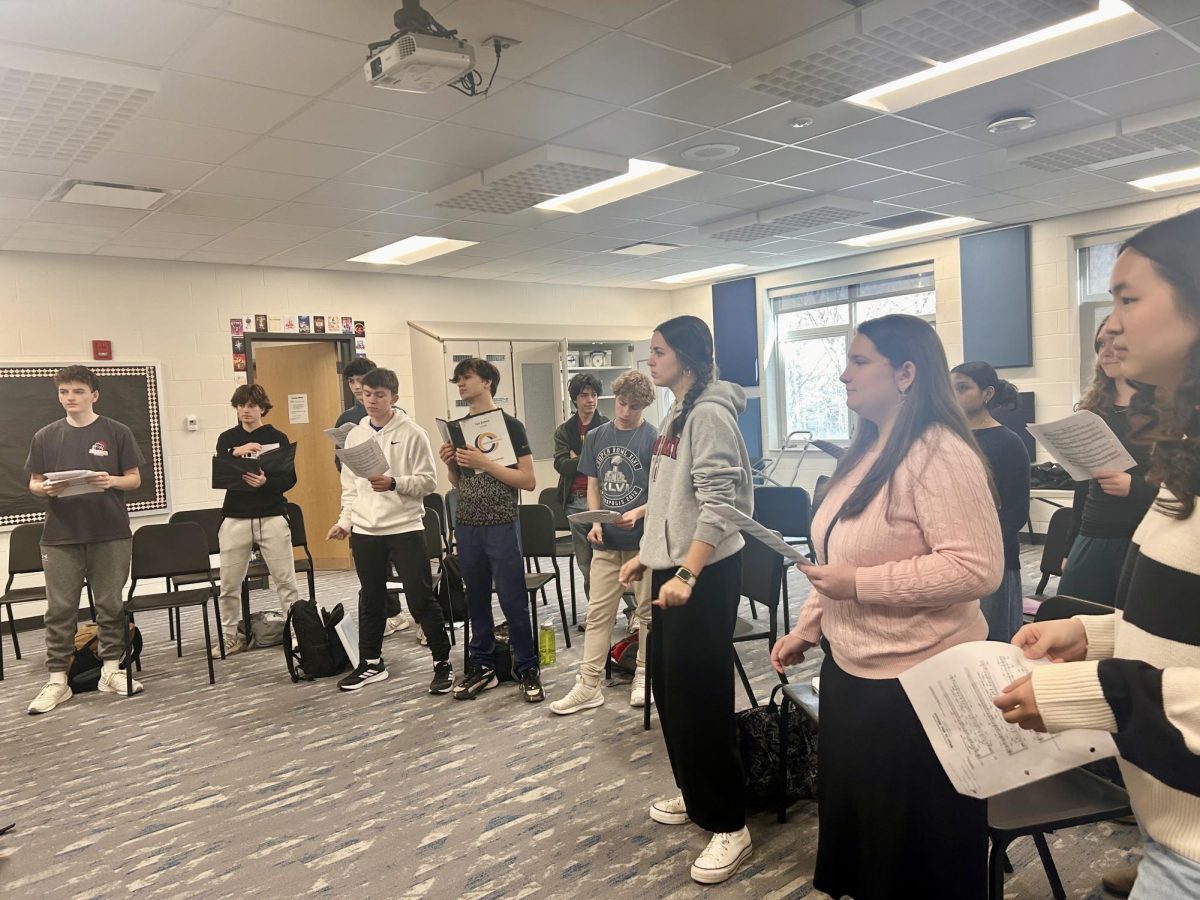

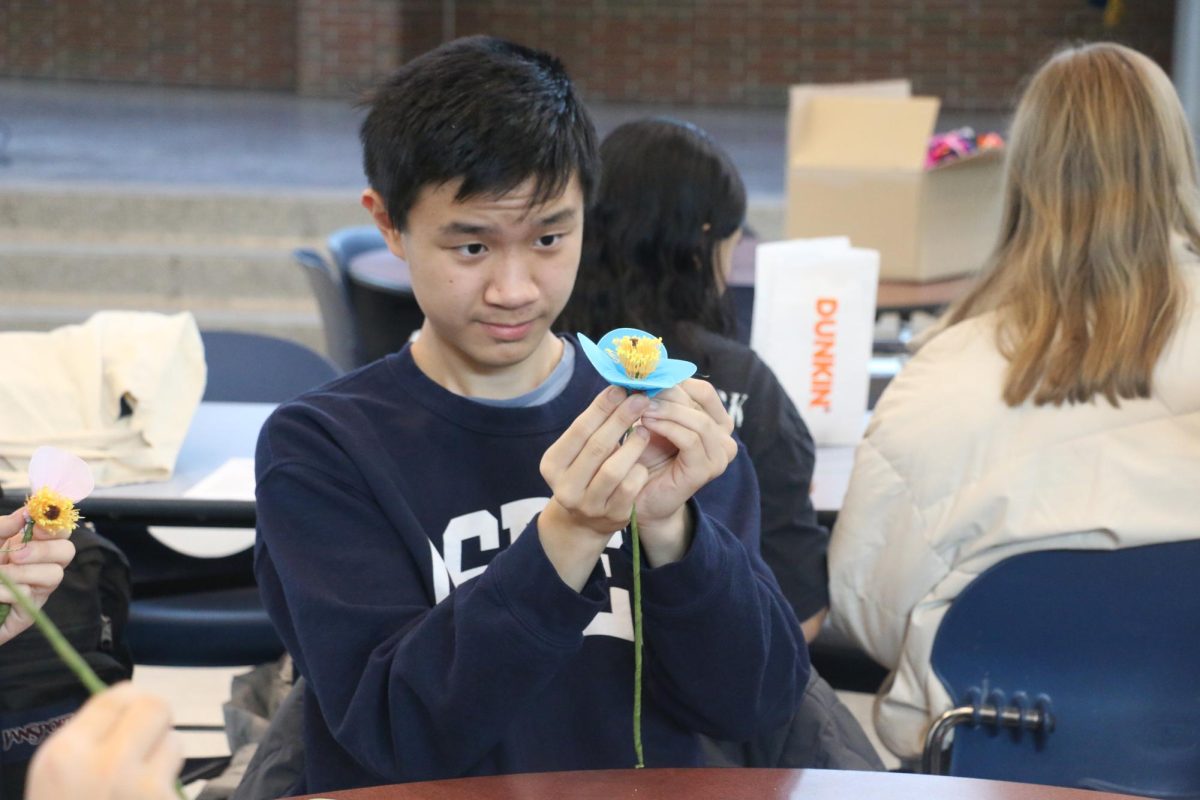



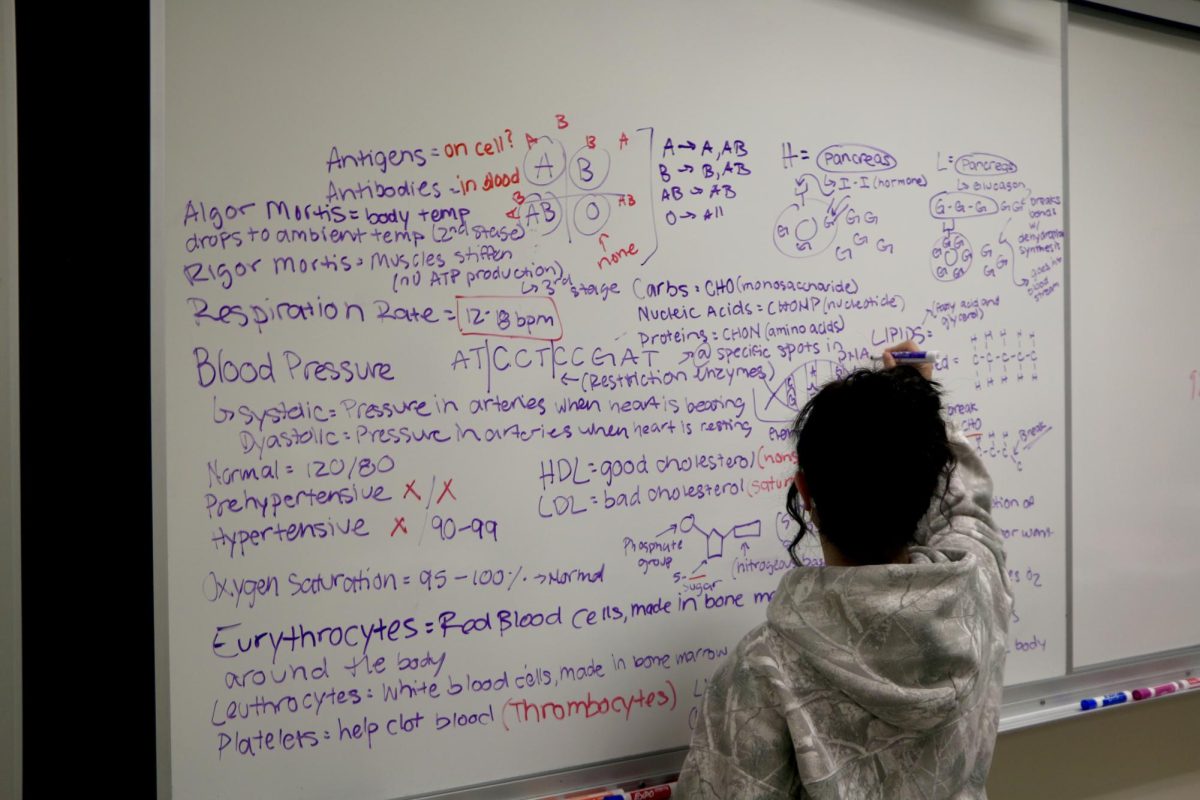
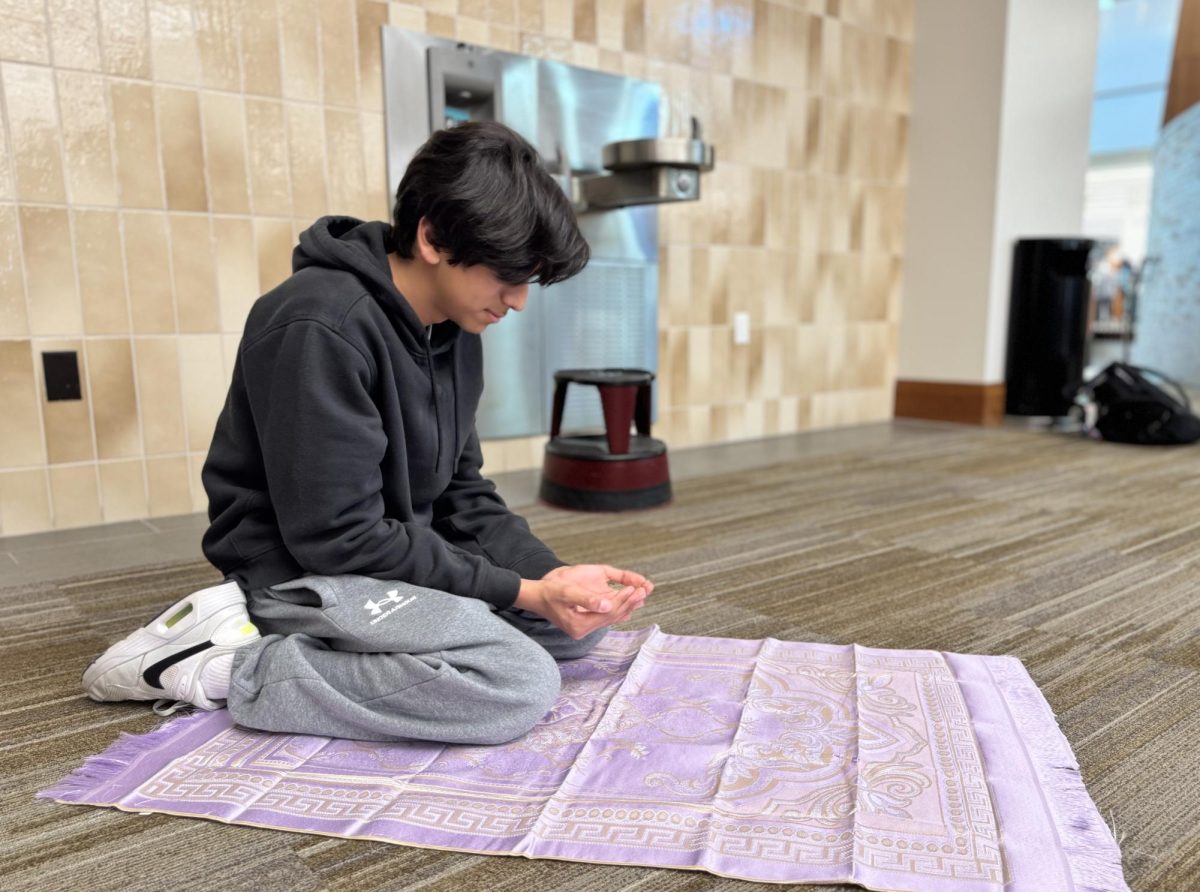





![AI in films like "The Brutalist" is convenient, but shouldn’t take priority [opinion]](https://hilite.org/wp-content/uploads/2025/02/catherine-cover-1200x471.jpg)













































![Review: “The Immortal Soul Salvage Yard:” A criminally underrated poetry collection [MUSE]](https://hilite.org/wp-content/uploads/2025/03/71cju6TvqmL._AC_UF10001000_QL80_.jpg)
![Review: "Dog Man" is Unapologetically Chaotic [MUSE]](https://hilite.org/wp-content/uploads/2025/03/dogman-1200x700.jpg)
![Review: "Ne Zha 2": The WeChat family reunion I didn’t know I needed [MUSE]](https://hilite.org/wp-content/uploads/2025/03/unnamed-4.png)
![Review in Print: Maripaz Villar brings a delightfully unique style to the world of WEBTOON [MUSE]](https://hilite.org/wp-content/uploads/2023/12/maripazcover-1200x960.jpg)
![Review: “The Sword of Kaigen” is a masterpiece [MUSE]](https://hilite.org/wp-content/uploads/2023/11/Screenshot-2023-11-26-201051.png)
![Review: Gateron Oil Kings, great linear switches, okay price [MUSE]](https://hilite.org/wp-content/uploads/2023/11/Screenshot-2023-11-26-200553.png)
![Review: “A Haunting in Venice” is a significant improvement from other Agatha Christie adaptations [MUSE]](https://hilite.org/wp-content/uploads/2023/11/e7ee2938a6d422669771bce6d8088521.jpg)
![Review: A Thanksgiving story from elementary school, still just as interesting [MUSE]](https://hilite.org/wp-content/uploads/2023/11/Screenshot-2023-11-26-195514-987x1200.png)
![Review: "When I Fly Towards You", cute, uplifting youth drama [MUSE]](https://hilite.org/wp-content/uploads/2023/09/When-I-Fly-Towards-You-Chinese-drama.png)
![Postcards from Muse: Hawaii Travel Diary [MUSE]](https://hilite.org/wp-content/uploads/2023/09/My-project-1-1200x1200.jpg)
![Review: "Ladybug & Cat Noir: The Movie," departure from original show [MUSE]](https://hilite.org/wp-content/uploads/2023/09/Ladybug__Cat_Noir_-_The_Movie_poster.jpg)
![Review in Print: "Hidden Love" is the cute, uplifting drama everyone needs [MUSE]](https://hilite.org/wp-content/uploads/2023/09/hiddenlovecover-e1693597208225-1030x1200.png)
![Review in Print: "Heartstopper" is the heartwarming queer romance we all need [MUSE]](https://hilite.org/wp-content/uploads/2023/08/museheartstoppercover-1200x654.png)


